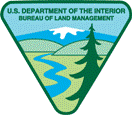U.S. Department of the Interior
Date of this Version
2002
Abstract
Western Wyoming is home to the largest, most diverse ungulate populations in the Rocky Mountain region. Maintenance of these populations and protection of their habitats is a primary concern among public and private sectors. While urban expansion, habitat loss, disease and changes in vegetation contribute to management concerns, extensive energy development is thought to pose the most serious threat to mule deer and pronghorn populations. Southwestern Wyoming is rich with oil and gas resources and has consistently produced 10 million barrels of oil each year, with gas production increasing steadily since the early 1980s. A five-county area (Sweetwater, Carbon, Sublette, Lincoln and Uinta) produced an estimated 13.8 million barrels of oil and 885 million cubic feet of natural gas in 1998. As of 1998, there were an estimated 2,100 producing oil and gas wells in southwestern Wyoming. Between 1984 and 1998 the US Bureau of Land Management (BLM) prepared 31 National Environmental Policy Act (NEPA) documents, evaluating project proposals for oil and gas development in the area. The cumulative total of approved wells has increased from 238 in 1984 to approximately 8,500 in 1998. While the total number of new wells drilled over this period was lower than the number approved, there is a large potential for further development and much interest in new gas fields. Recently, renewed political and economic support for developing domestic energy reserves has intensified industry efforts to extract oil and gas from public lands.


Comments
Published in TRANSACTIONS OF THE SIXTY-SEVENTH NORTH AMERICAN WILDLIFE AND NATURAL RESOURCES CONFERENCE, 2002, ed. Jennifer Rahm (Washington, DC, 2002).